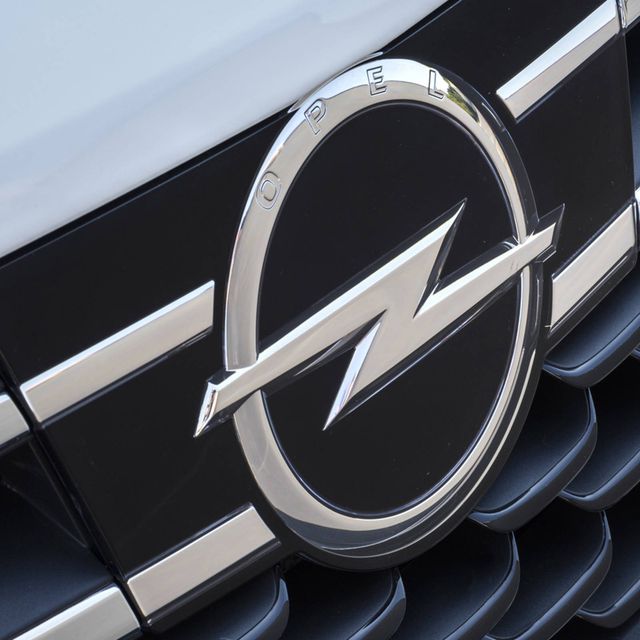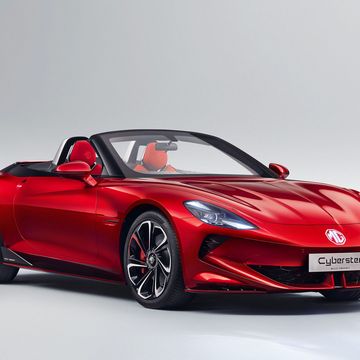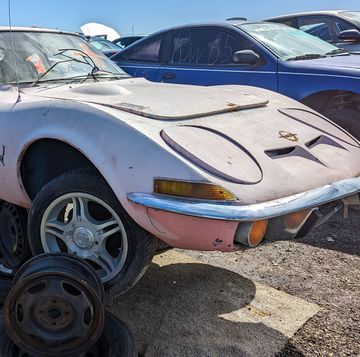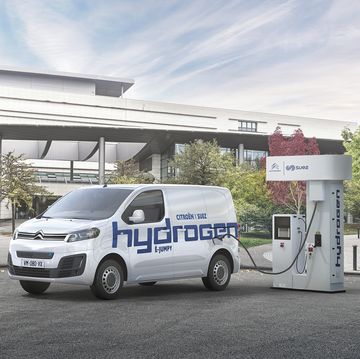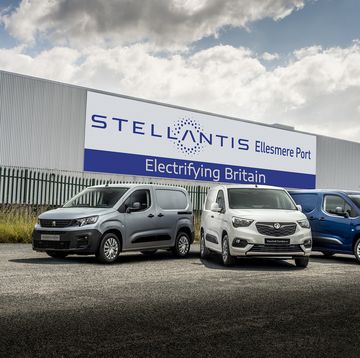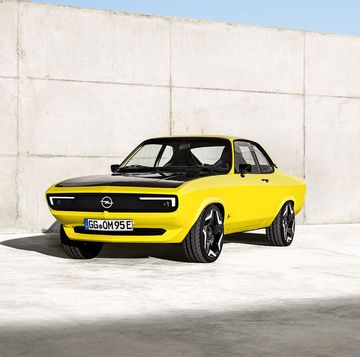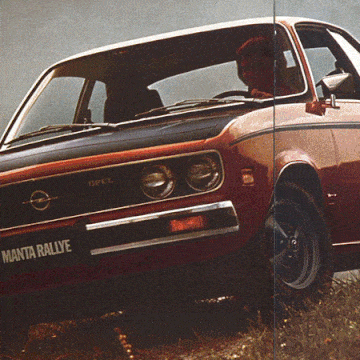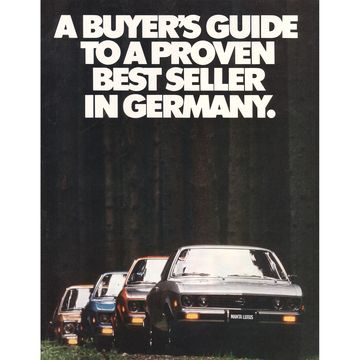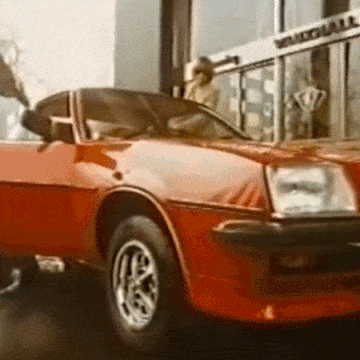PSA Group's planned acquisition of Opel, announced Monday, will end General Motors' nearly 90 years of ownership that grew more turbulent and acrimonious as time wore on.
Opel was founded in 1862 by Adam Opel to build sewing machines. His sons moved the company’s direction toward mass mobility first by manufacturing bicycles and then later building their first car, the Opel Lutzmann, in 1899. Thirty years later, the world’s first economic crisis threatened its existence, and the heirs agreed to sell the company in 1929 to General Motors for $33 million.
Opel initially blossomed under GM, becoming the first German automaker to build more than 100,000 vehicles annually. In 1939, at the outbreak of World War II in Europe, Opel boasted it was Europe's largest carmaker for the fourth year running.
During the Third Reich, the carmaker "soared under the swastika" by supplying the German war machine, historian Henry Ashby Turner wrote in his authorized account "General Motors and the Nazis." Opel’s truck, dubbed the Blitz, became a standard transport for Wehrmacht troops. GM has repeatedly claimed it lost control of its German unit during the war, although formally it retained ownership over its subsidiary.
After the war, Opel made a splash with upscale models such as the Admiral, which easily rivaled the best cars BMW had built at the time. "For many years, Ruesselsheim’s officer at sea was the only alternative to the S-class," wrote Germany's Auto Motor und Sport.
Opel's reputation for quality, reinforced by its decades long advertising slogan "Opel the reliable," positioned the manufacturer at near premium levels. In 1972, Opel even sold more cars in its German home market than Volkswagen, whose Beetle ran out of steam.
Long descent
But then the long descent set in. VW struck back, landing a blockbuster hit two years later with the first Golf. Meanwhile Opel’s fuel thirsty sedans suffered from the onset of the oil crisis.
GM's cost cutter, Jose Ignacio Lopez, helped to improve profitability but at the price of Opel's long term future. Under the Spanish manager, suppliers were squeezed for every cent possible. This earned Lopez the unflattering nickname "The Ruesselsheim Strangler."
Soon all sorts of quality problems beset the brand, heavily tarnishing its reputation for reliability. Opel’s market share in Germany, which still rivaled that of VW's as recently as 1995 with 17 percent, collapsed in the following years to just 8.4 percent in 2008.
By then Opel’s pugnacious labor leader, Klaus Franz, had become the best known face of the company, leading the charge against executives sent from Detroit who only viewed Ruesselsheim as a rung on the corporate ladder.
Rather than developing a business model, a brand strategy and then deriving the requisite products to meet customers’ needs, GM's strategy for Opel was seen by many as short-term in which meeting quarterly earnings per share targets took primacy.
GM bankruptcy
When GM filed for bankruptcy in 2009, Franz appeared to be proven right.
German Chancellor Angela Merkel agreed to fund Opel with German taxpayers’ money only on the condition that GM sold Opel to a consortium led by Canadian supplier Magna International.
Emerging from bankruptcy, GM cancelled the deal at the last minute, instead demanding it receive the same state aid that Magna would have been granted. GM’s then-CEO Ed Whitacre sent his freshly appointed Opel boss, Nick Reilly, on a European tour from one country to the next asking for taxpayer handouts.
Whichever government bid the highest, would see the fewest jobs cut once the axe was swung -- an approach that angered politicians. Eventually Whitacre relented, remarking irritably in an interview with a German newspaper that "If Mrs. Merkel doesn’t want to offer us anything, then we will just go ahead and pay for it ourselves. Maybe that will make your Chancellor happy."
Opel's troubles didn’t end however. On top of the homemade problems came the Great Recession in which car sales in Europe plunged to 20 year lows, requiring further cuts at the brand.
In early 2012, GM leaked plans of plant closures to the media, threatening to close either Bochum in Germany or Ellesmere Port in the UK, while negotiating over wage concessions at both. This backfired horribly on management, helping lead to a record low share of private car buyers in Germany for the brand at just 5.2 percent -- less than VW’s Czech import brand Skoda.
The long, drawn out negative media reports cost the Opel brand sympathy and scared customers away, Ferdinand Dudenhoeffer, head of Germany’s Center Automotive Research, said at the time.
Bochum in Germany was closed at the end of 2014, the first German auto plant in decades to be shuttered by any automaker and the third at the brand after Antwerp in Belgium in 2010 and Azambuja in Portugal before that. Meanwhile Opel's workforce shrank from over 50,000 in Europe to roughly 35,000.
After GM recruited former Continental CEO and Volkswagen China boss Karl-Thomas Neumann to take charge at Opel, the brand was edging towards profitability. Despite plowing a further 4 billion euros into the company through the end of last year, the damage done over the previous decade simply was too great. Opel never succeeded in boosting sales far enough to reach the black and finished last year with its 17th straight annual loss.
"This company needs help," PSA boss Carlos Tavares said of Opel at PSA's 2016 financial results conference on Feb. 23. "Making red ink for 10 years and burning 1 billion euros of cash every year is not going to last forever."
Key dates in Opel's history
1862: Adam Opel begins making sewing machines in Ruesselsheim, Germany.
1901: Opel begins jointly producing cars with the French automobile company, Darracq.
1902: The first car built entirely by the Opel brothers goes on sale.
1909: Opel introduces a low-priced car, known as the "Doctor's Car."
1923: Germany's economic crisis forces the closure of the Opel factory.
1924: Opel restarts output with the "Tree Frog" model after studying Henry Ford's production methods.
1929: General Motors buy an 80 percent stake.
1931: Opel becomes a wholly owned GM subsidiary.
1945: More than half of Opel's main factory is destroyed by Allied bombing.
1947: Automobile production resumes.
1948: Post-war, GM reassumes management control.
1962: Opel opens second large factory in Bochum.
1982: Opel Corsa production begins at a new factory in Zaragoza, Spain.
1992: State-of-the-art plant opens in Eisenach in the former East Germany.
1998: Redesigned Opel Astra becomes GM's best-selling car in Europe.
"GM's relationship with Opel grew turbulent through the years" originally appeared on Automotive News on 3/5/17.
